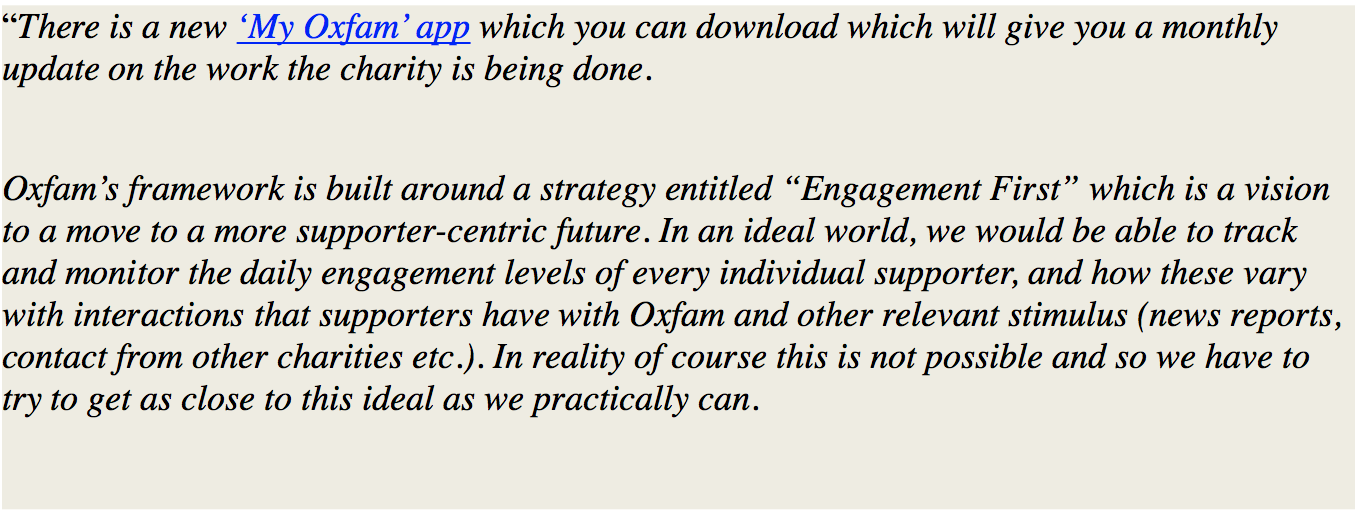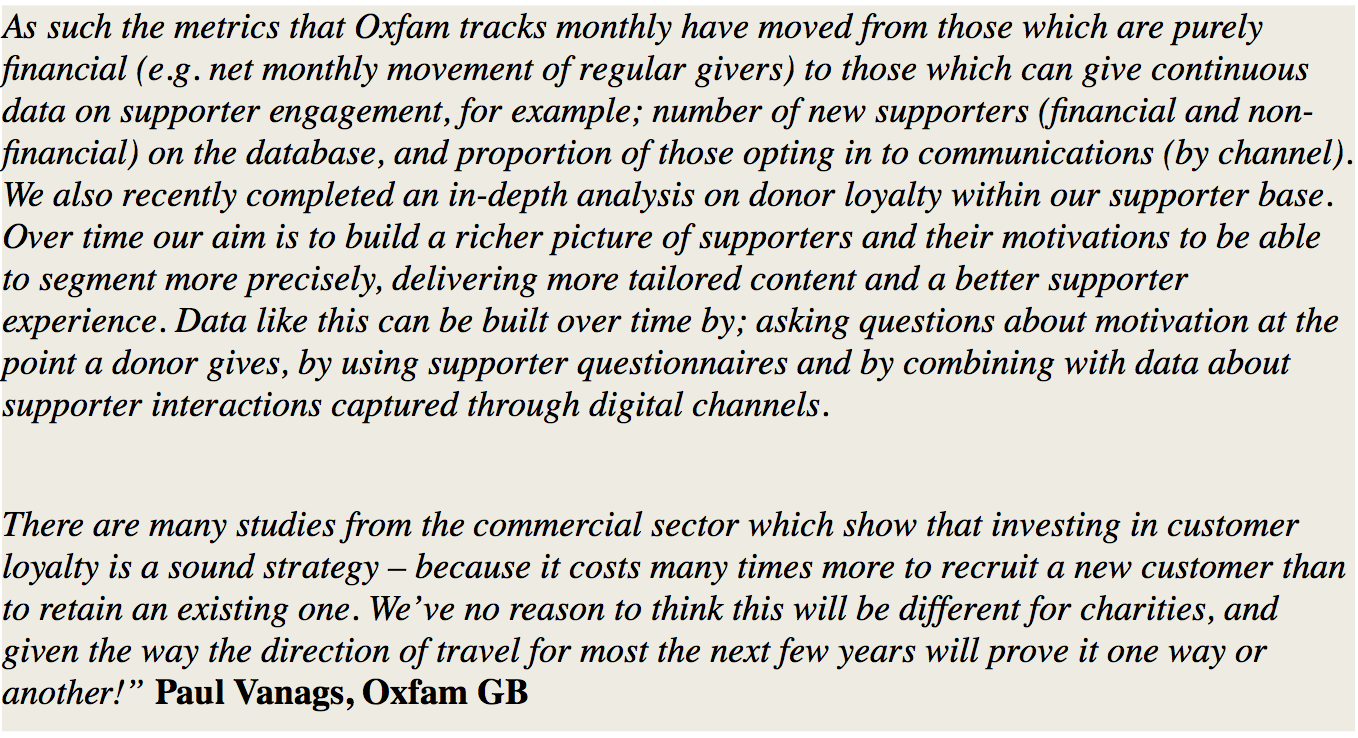CDE project 11a: steps four and five
- Written by
- The Commission on the Donor Experience
- Added
- April 30, 2017
Step four: planning the donor journey
When we are looking to create a great experience for the donor, what is essential is that we give them a great sign up experience and introduction to the charity.
The welcome (see project 4 for more detail on welcoming donors)
Often this starts when someone picks up the phone to a donor. The telemarketing team needs to be an extension of your fundraising team. This means keeping the callers motivated, engaged and being passionate about your cause. See project 11e for more information on how to use the telephone to do this.
Ensure the donor gets an e-mail, or mailing pack which will be interesting to them and will satisfy them that their money has been well spent. This is a point where people need to be reminded why they gave. There are many examples of welcome packs and letters which can be found on the SOFII website. Here is a link to an example from ActionAid which was produced with fundraising agency, Bluefrog.
Having a genuine welcome and thank you call is also a nice touch and can also improve retention. You can take the time to remind someone their first payment is coming and talk about the charities work.
The journey and updates
Moving on from the initial welcome we should make a point of reminding people why they have given and showing them the difference that the gift is helping to make for the beneficiaries. This can be done through an ongoing program of updates, even if it is just a newsletter.
- Plan the first two years of communications
- Map out measures to be taken on donor feedback and actions
- Focus on donor interests, how they are helping to solve the problem
- Build in a positive attitude with the donor care team towards all donors, even those lapsing (because the donor may not see it the way the charity does)
- Quality updates and content, the “best foot forward” for the charity
Step five: imagery, emotion and language
(also see projects 1 and 6)
One of the bigger talking points is the use of imagery and language which is exploitative. Firstly, we need to consider that this is a value judgement by the person viewing an advert in most cases. Due to the regulations that are in place we must observe there are already limitations in place. Without naming charities, an approach which one charity might regard as acceptable would be unacceptable to another. Charities have had success in delivering results with footage which is extreme or shocking, but also charities have delivered results as good, or better using more neutral or positive footage, such as Dogs Trust.
There are people that will respond to different types of emotion. American psychologist and emotions scholar, Paul Ekman defined the six primary emotions as happiness, surprise, anger, disgust, sadness, fear. So if we were to compare adverts from Dogs Trust and the RSPCA you would see very different emotions being used. Dogs Trust focus on the happiness that people get from sponsoring a dog with a very narrow focus on negatives. By contrast the RSPCA take a more negative approach focusing on the sadness or anger people feel towards the mistreatment of animals. Dogs Trust is positive in its approach and fun, and people enjoy getting updates from the sponsored dog. Neither approach is wrong per se, but you should consider how the emotions you use in your fundraising impact on the donor experience.
Dogs Trust:
Imagery
There are some basic rules to follow, showing eye contact with a beneficiary or spokesman and showing the need, being two of the more important ones. How we do that is something we should consider very carefully. The use of imagery of children that makes them appear helpless and vulnerable creates a lot of debate. On one hand, it can be seen to objectify the beneficiary and exploit them to deliver maximum response. It can also reinforce stereo-types of victimhood. On the other if the objective is to raise money, which is then helping solve the problem, does that justify it?

CNN article on charity imagery
Guardian article
Step six: evaluation and measuring donor happiness
This will be a new set of KPIs to measure in fundraising. We are used to tracking attrition and income, average gifts and so on. Oxfam is moving in the right direction with a focus on more regular thanking and updating of supporters. Below is an overview and recommendations from Paul Vanags, Head of Public Fundraising at Oxfam


With the advancements in mobile and web technology we can now deliver experiences directly to people via their phone. Digital marketing techniques allow us to have a greater insight into our supporter’s wider interests and we have many channels to engage our audience without an explicit fundraising ask. It is possible to ask people about what they would like to see more and less of from us as a charity. It’s just good marketing.
However, the objective should be to keep people engaged, happy and feeling positive about the charity and that in the end will reward us more. Asking donors when they join about the about of feedback they want, and when and then delivering it is key.



















